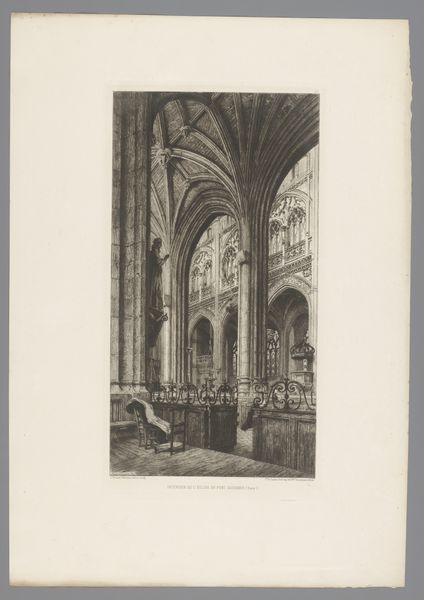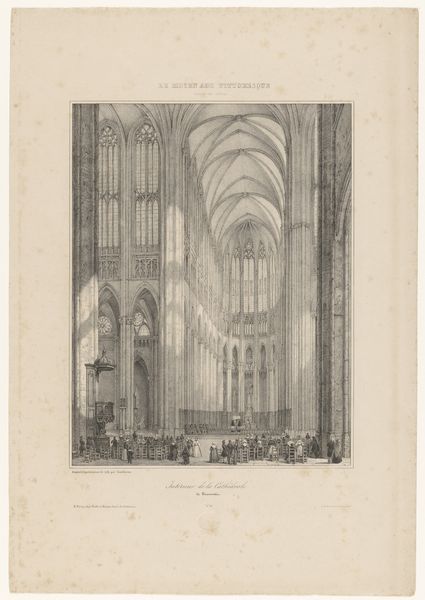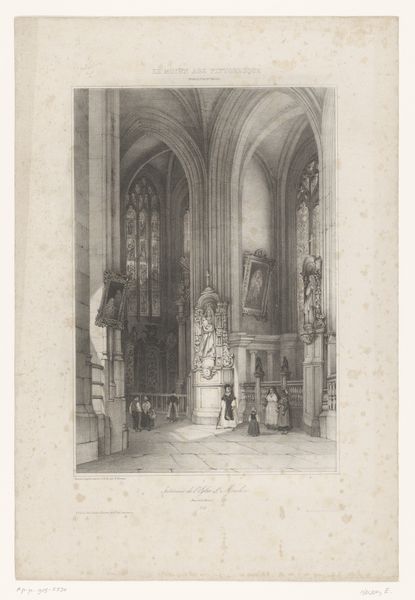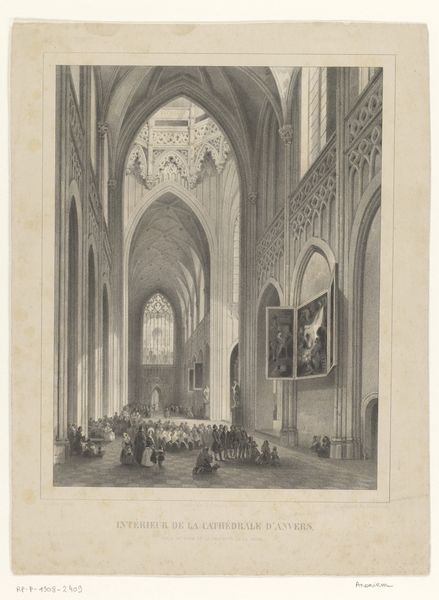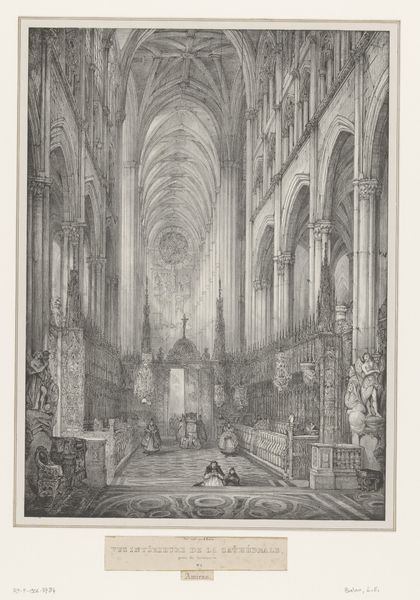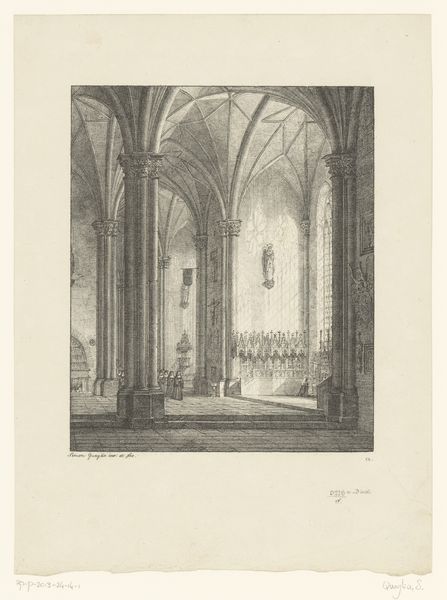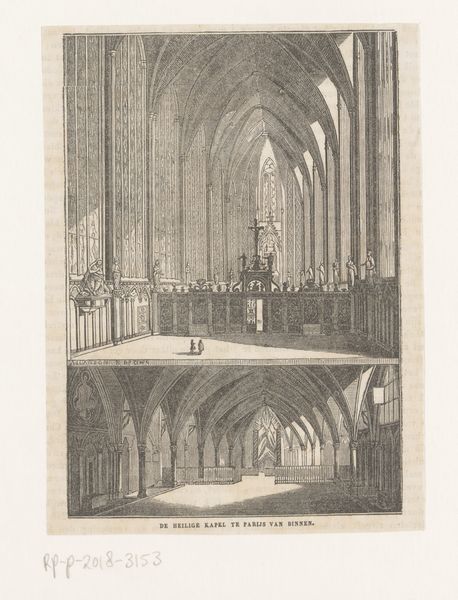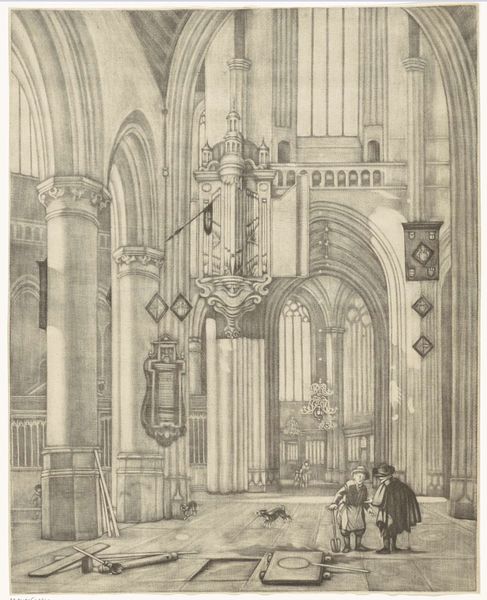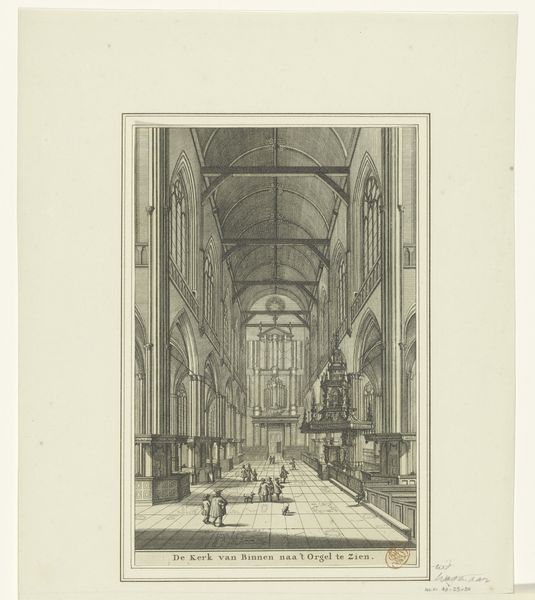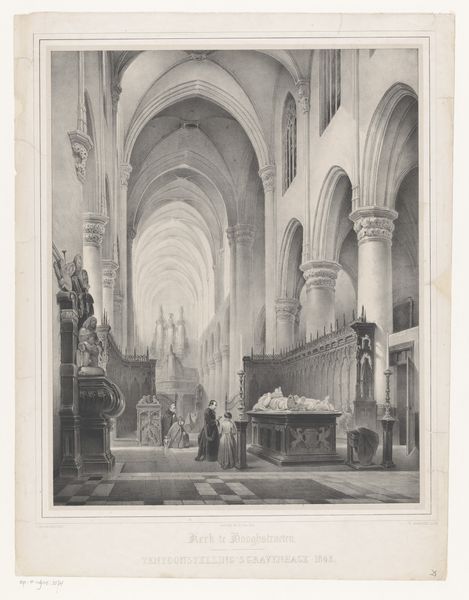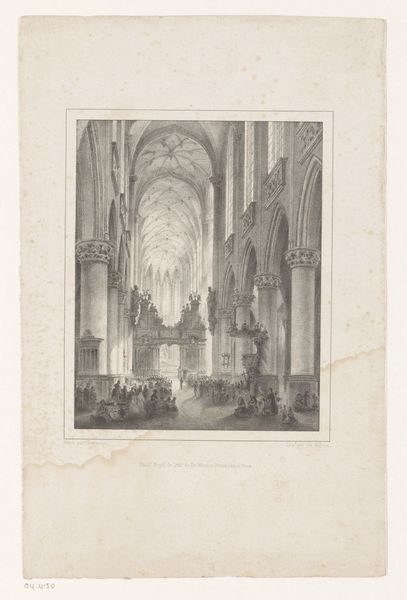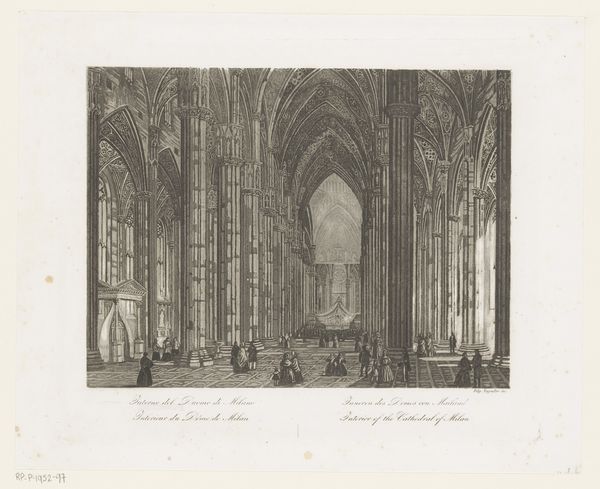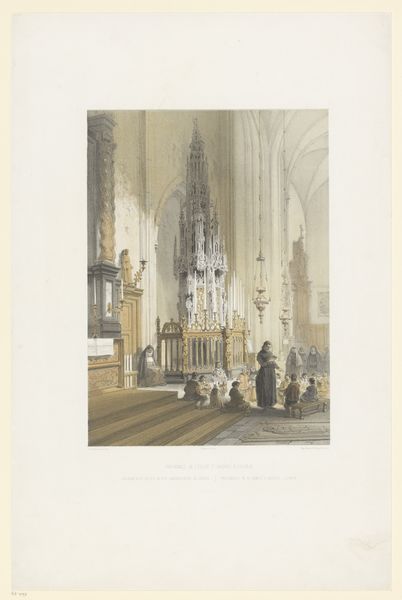
Dimensions: height 325 mm, width 226 mm
Copyright: Rijks Museum: Open Domain
Editor: Here we have Frans Vervloet's "Interior of the Church of Our Lady across the Dijle" from 1851, a drawing and engraving. I'm immediately struck by the soaring architecture. What's particularly interesting to you about the symbolism in this piece? Curator: Notice how the lines all lead upwards, drawing the eye towards the heavens. This isn’t just about architectural detail, is it? Churches as cultural artifacts have always performed important social functions. It really creates an image about access and inaccessibility; it poses a question: How do we relate to what is 'high and mighty' versus how people commune with that might, down here? Editor: I hadn't considered the composition quite that way, in terms of its symbolism. Curator: Look at the people within the space. What do they communicate? Are they reverent, hurried, or lost within the grandeur? They're almost dwarfed, wouldn’t you agree? Consider also the rise of Realism as a movement around this time. Perhaps Vervloet aims to capture the 'real' human experience within this symbolic, architectural echo. Editor: So, the seemingly simple act of depicting an interior actually reveals a lot about societal relationships at the time. It also seems relevant still, today. Curator: Exactly. The architecture stands as an idea of higher purpose, contrasted against individuals going about their daily lives. It serves to underscore the personal search for faith within an institution. Editor: It makes you wonder what those individuals’ stories are and how the gothic space impacts those lives! Thanks, that really reframed how I was looking at it. Curator: Indeed! It is these dialogues across centuries that allow artworks to stay current.
Comments
No comments
Be the first to comment and join the conversation on the ultimate creative platform.
